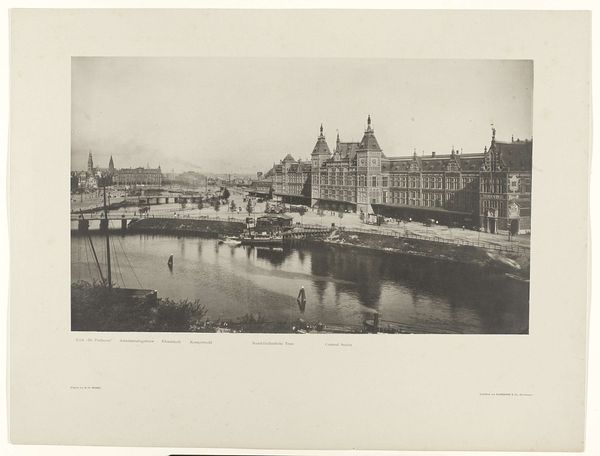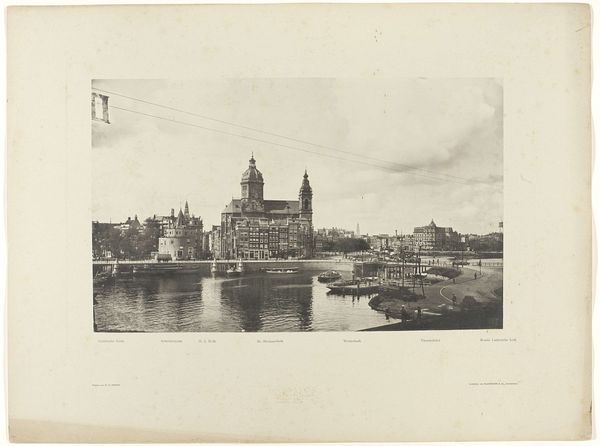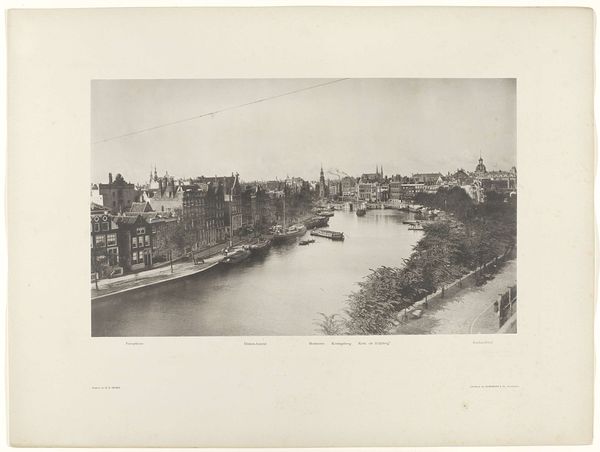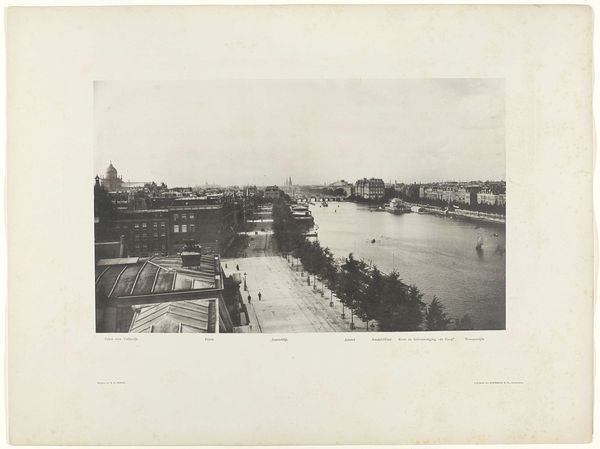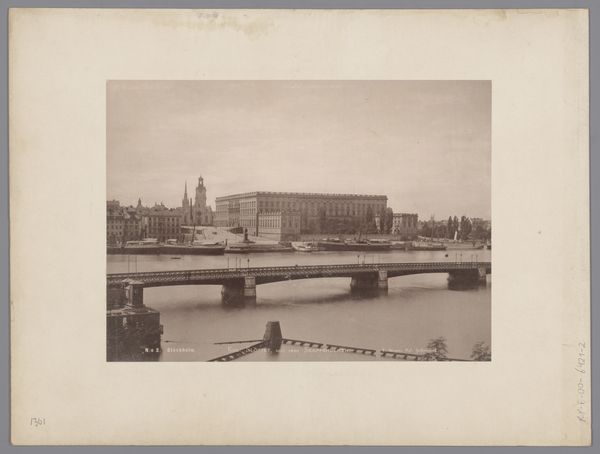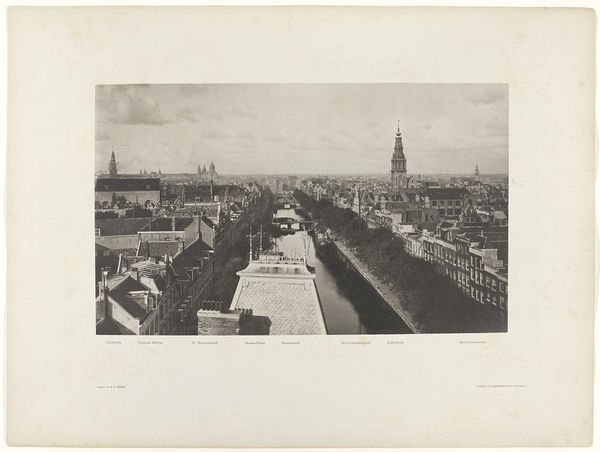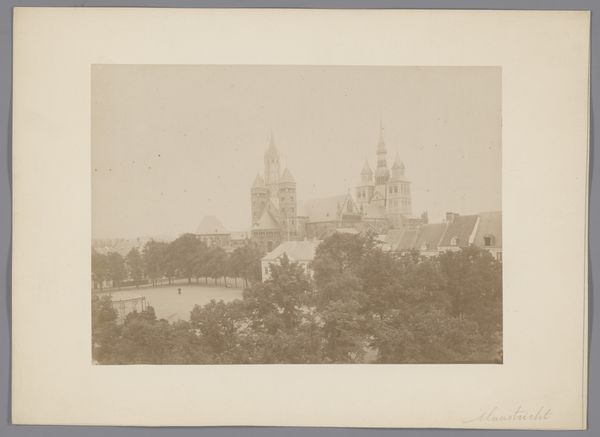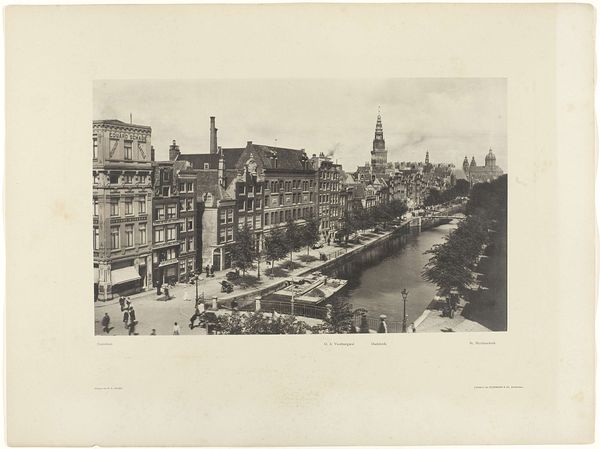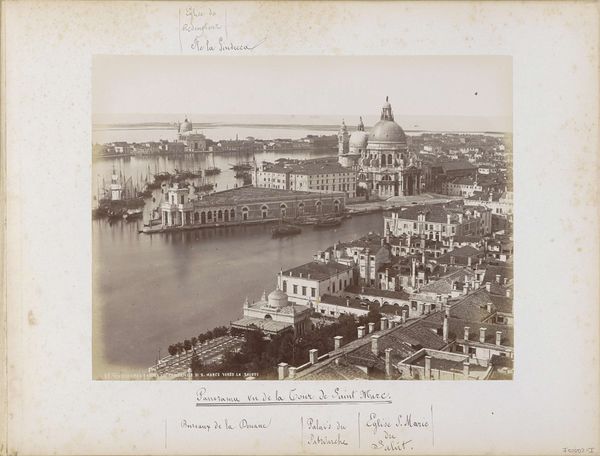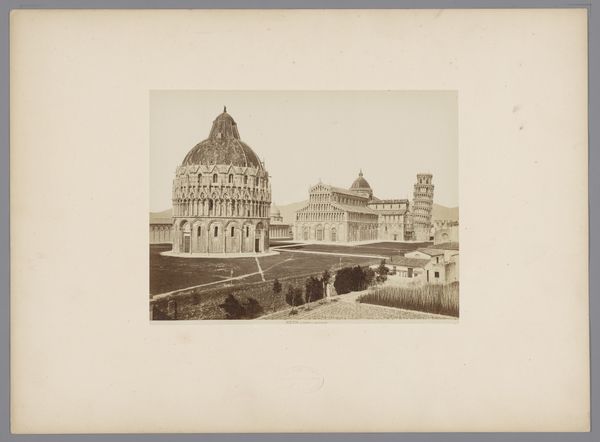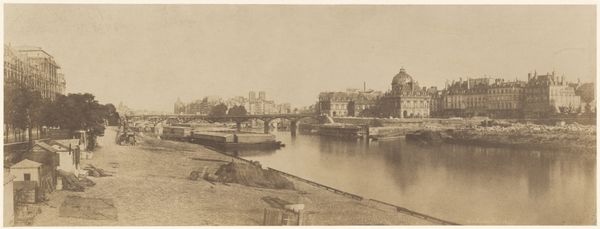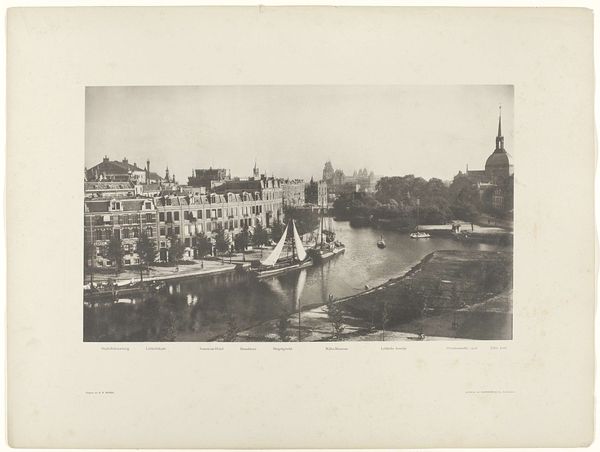
Centraal Station, Prins Hendrikkade en Sint-Nicolaaskerk, gezien vanaf kantoorgebouw Mercurius aan de Prins Hendrikkade, Amsterdam before 1894
0:00
0:00
print, photography
#
print photography
#
dutch-golden-age
# print
#
photography
#
cityscape
#
realism
Dimensions: height 278 mm, width 467 mm, height 483 mm, width 641 mm
Copyright: Rijks Museum: Open Domain
Editor: This photogravure, "Centraal Station, Prins Hendrikkade en Sint-Nicolaaskerk, gezien vanaf kantoorgebouw Mercurius aan de Prins Hendrikkade, Amsterdam," was created by Gerrit Hendricus Heinen sometime before 1894. The skyline has this remarkable weight and clarity to it, and it really invites you in. What do you see in this image? Curator: What immediately strikes me is the way this cityscape stages the birth of a modern identity in Amsterdam. Before 1894, the city was experiencing rapid industrialization and urbanization. Photography, itself a product of modernity, becomes a tool to both document and, perhaps, legitimize this transformation. We see the grand architecture of the Central Station juxtaposed against the older Sint-Nicolaaskerk, a visual tension that speaks to shifting power structures within the city. Do you think the artist is making a statement about this shift through the careful composition? Editor: It's interesting you mention that. The station does seem much larger than the church. And yes, perhaps it is pointing out a changing relationship to the Church, and faith more generally? Curator: Precisely. The vantage point from the "Mercurius" building is also telling. It was likely a center of commerce, suggesting a viewpoint informed by burgeoning capitalism. And, considering that the construction of the Central Station notoriously displaced many working-class families and disrupted the city's traditional waterfront, we have to ask: whose perspective is being centered here, and at what cost? What narratives are obscured by this seemingly objective depiction? Editor: Wow, I hadn't considered that it might be intentionally obscuring something, that photography isn't always an objective representation. It offers such a unique, albeit limited, perspective on history. I think that makes me want to dive deeper into this period and the context in which this image was created. Curator: Exactly. It's about interrogating the image, asking critical questions about its production and reception, to understand its place within broader socio-political narratives. That’s what truly brings art to life, I think.
Comments
No comments
Be the first to comment and join the conversation on the ultimate creative platform.
